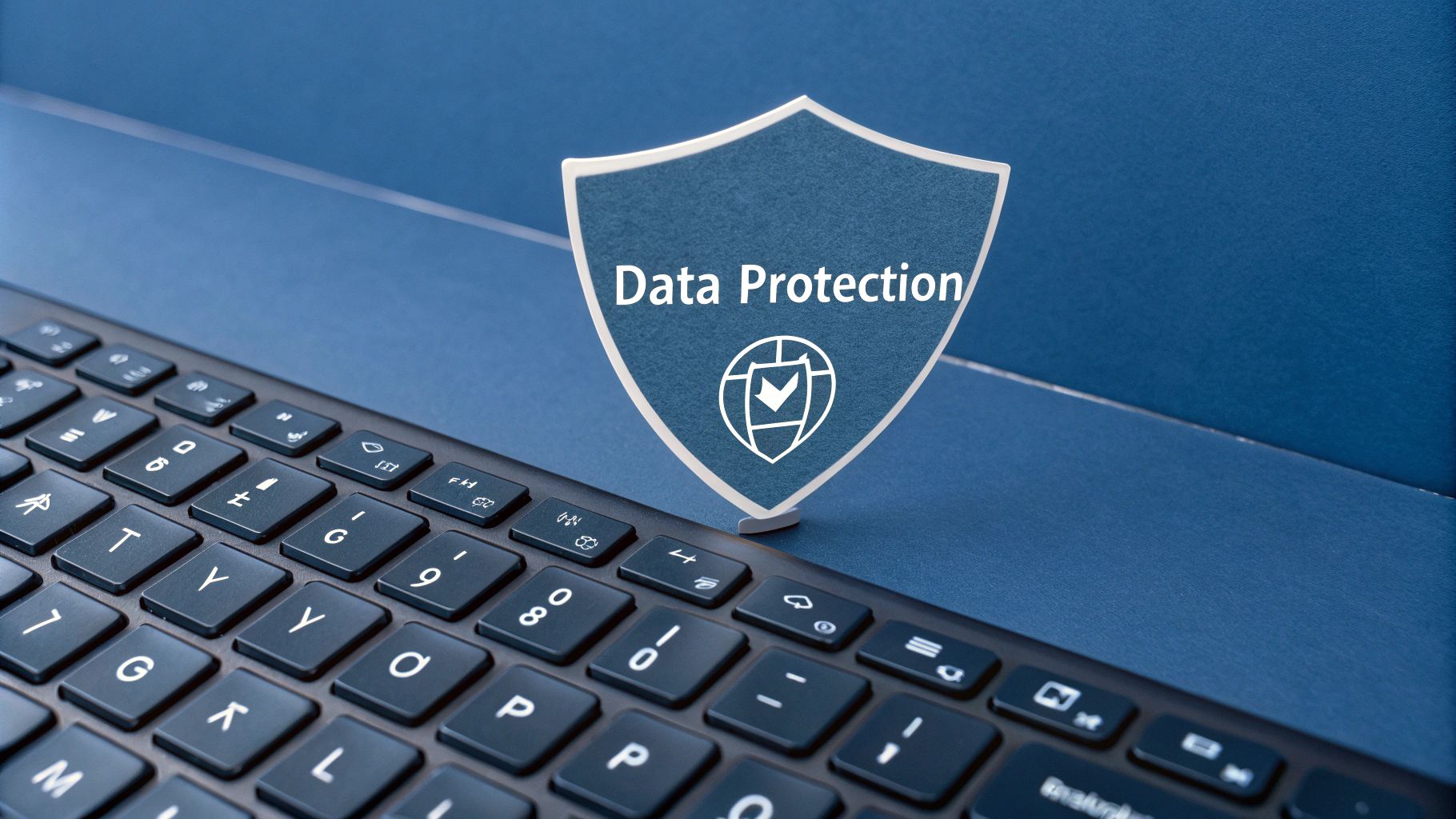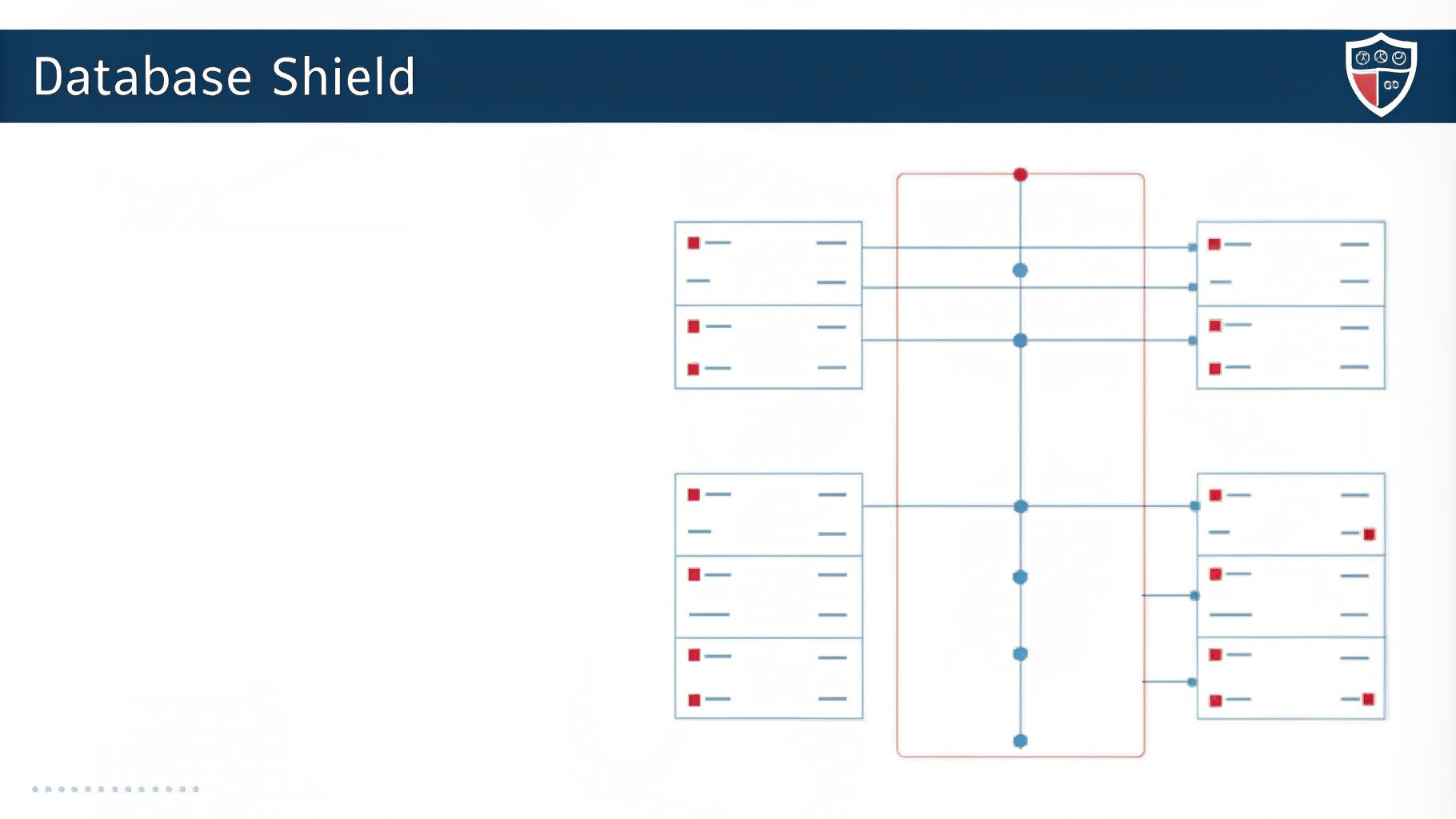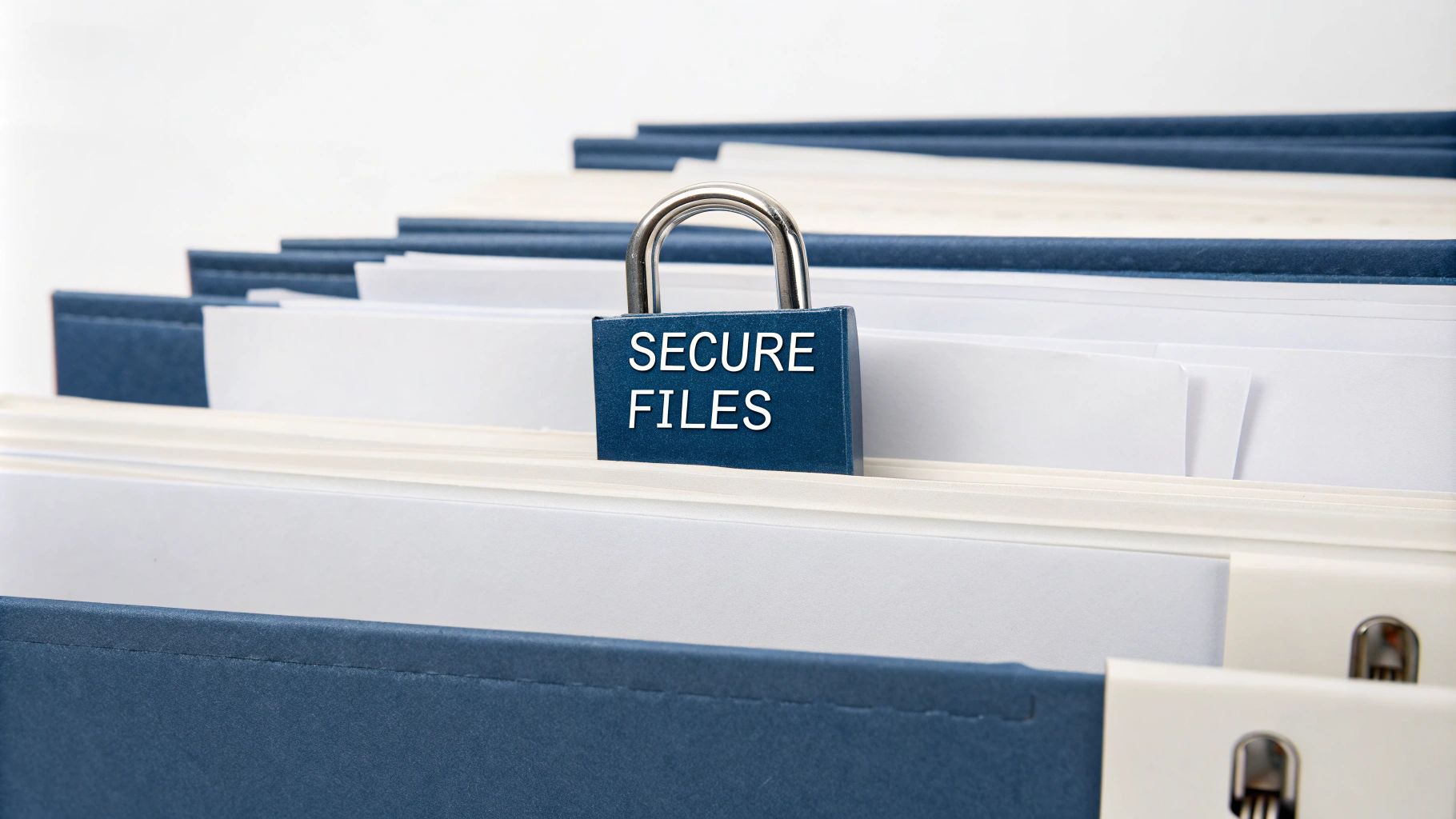Essential PHP Security Best Practices in 2024
Understanding PHP Security Fundamentals

Building secure PHP applications requires a strong foundation in security concepts and an awareness of potential vulnerabilities. This is particularly important because PHP remains a popular language for web development, powering a substantial portion of websites today. As a result, PHP applications often become targets for attacks if not properly secured. Understanding the basics is the first step in building secure PHP applications.
Common PHP Security Risks
One common vulnerability is Cross-Site Scripting (XSS), where attackers inject malicious scripts into web pages viewed by other users. For instance, consider a comment section that doesn't properly sanitize user input. An attacker could inject JavaScript code that steals other users' cookies when they visit the page. This highlights the critical need to validate and sanitize all data received from users.
Another serious vulnerability is SQL injection, which happens when attackers manipulate database queries through user input. Think of a login form where an attacker enters SQL code instead of a username. If the application doesn't handle this correctly, the attacker could gain unauthorized access to the entire database. Consequently, using parameterized queries or prepared statements is a cornerstone of secure PHP development.
Insecure file uploads also present significant risks. If a website allows users to upload files without proper restrictions, attackers could upload malicious scripts disguised as images or other seemingly harmless files. This could compromise the server and lead to data breaches. Therefore, implementing strict file upload controls and validation is essential.
Core Security Principles for PHP
Secure PHP development relies on a few core principles. Input validation, which ensures that all data received from users conforms to the expected format and is free of malicious code, is paramount. This includes checking data types, lengths, and permitted characters. For example, if you expect a number, verify that the input is indeed numeric.
Output encoding, the process of converting data before displaying it to prevent XSS vulnerabilities, is another crucial practice. This means converting special characters, such as < and >, into their corresponding HTML entities. This effectively neutralizes potentially harmful scripts embedded within user-supplied data.
Secure session management is also essential to prevent hijacking. Using secure, random session IDs and enforcing session expiration times are vital components of this. This helps protect users' sessions from unauthorized access. Additionally, protecting against Cross-Site Request Forgery (CSRF) by implementing tokens adds a further layer of defense, ensuring that requests originate from the intended user.
By understanding these fundamental concepts and incorporating secure coding practices, developers can build robust and secure web applications. These principles are the bedrock of a secure coding approach, mitigating risks and protecting against common attacks. Now, let's delve deeper into input validation and sanitization.
Input Validation and Sanitization
Following our discussion of fundamental security principles, let’s examine input validation and sanitization. This process serves as the first line of defense against a variety of attacks, including XSS and SQL injection. Essentially, it ensures that all data from users is thoroughly checked and cleaned before being used by your application.
Validating User Input
Validation confirms that user input adheres to the expected format and data type. For instance, if you anticipate a number, your code should verify that the input is indeed numeric. You can also check for specific ranges, lengths, and formats like email addresses or dates. As an example, when a user provides their age, the application should confirm that the input is a positive integer within a reasonable range. This helps prevent unexpected behavior and potential vulnerabilities resulting from incorrectly formatted data.
Sanitizing User Input
Sanitization, on the other hand, modifies the input to remove or neutralize potentially harmful characters. This is particularly crucial for data displayed on web pages or used in database queries. For example, if a user enters text containing HTML tags like <script>, sanitization converts these tags into their HTML entity equivalents, like <script>. This prevents the browser from executing the script, thus mitigating XSS attacks. Similarly, sanitizing database inputs helps prevent SQL injection by escaping special characters that could manipulate the query.
PHP Functions for Sanitization
PHP offers several functions for effective input sanitization. htmlspecialchars() encodes HTML entities, while strip_tags() removes HTML and PHP tags entirely. For database interactions, parameterized queries or prepared statements are the recommended approach. This prevents direct insertion of user-supplied data into queries, effectively mitigating SQL injection risks. Choosing the right sanitization method depends on the context and how the data will be used. If you want to allow some HTML formatting while preventing script execution, htmlspecialchars() is a better choice than strip_tags().
Implementing these input validation and sanitization practices is crucial. They provide a robust defense against many common web application vulnerabilities. By thoroughly checking and cleaning user input before processing it, you significantly reduce the risk of attacks and protect the integrity of your application. Now, let's move on to authentication and session management.
Authentication and Session Management
Building upon input validation and sanitization, strong authentication and session management are critical components of secure PHP development. These mechanisms control user access and maintain the state of a user's interaction with your application. Implementing them correctly is paramount for protecting user data and preventing unauthorized access.
Secure Authentication Methods
Authentication verifies a user's identity. Instead of creating your own authentication system, utilize established methods like bcrypt or Argon2 for password hashing. These algorithms create a one-way hash: you can hash the password, but you can't retrieve the original password from the hash. This protects passwords even if your database is compromised. Never store passwords in plain text. Consider implementing multi-factor authentication (MFA) for added security, requiring a second form of verification, such as a code from a user's phone.
Robust Session Management
After a user is authenticated, session management maintains the user's state across multiple requests. This typically involves session IDs, which act as unique identifiers for each user's session. These IDs should be random, unpredictable, and securely generated. This prevents attackers from guessing session IDs and hijacking sessions.
Enforcing session expiration is also essential. After a period of inactivity, the user's session automatically terminates, limiting the timeframe for potential attacks even if a session ID is compromised. Session data should always be stored securely, preferably server-side, to prevent unauthorized access.
Protecting Against CSRF Attacks
Cross-Site Request Forgery (CSRF) involves malicious requests made on behalf of a user without their knowledge. For example, an attacker could embed a hidden form on their website that automatically submits a request to your application when a user visits. If the user is logged in, this request could perform actions without their consent. To prevent CSRF attacks, use anti-CSRF tokens. These unique, randomly generated tokens, included in every form submission, verify that the request comes from the intended user.
Implementing these security practices for authentication and session management strengthens your application against unauthorized access and data breaches. By using secure authentication methods, managing sessions effectively, and protecting against CSRF attacks, you create a secure environment for users and protect their sensitive information. This leads us to the next important topic: database security.
Database Security
While authentication and session management are crucial, database security is equally important. Databases often hold the most sensitive information, making protection against unauthorized access and manipulation paramount.
Preventing SQL Injection
SQL injection remains a significant threat. This vulnerability occurs when user-supplied data is incorporated directly into SQL queries without proper sanitization, potentially allowing attackers to execute arbitrary SQL code. To prevent this, use parameterized queries or prepared statements. These treat user input as data, not executable code, preventing direct manipulation of the database.
Secure Database Credentials
Storing database credentials securely is vital. Never hardcode them directly into your PHP code. Instead, store them in a configuration file outside the webroot, with restricted permissions. Avoid using the root database user; create a dedicated user with limited privileges, granting only necessary permissions. This principle of least privilege limits potential damage if credentials are compromised.
Using a Database Abstraction Layer
A database abstraction layer, like PHP Data Objects (PDO), is highly recommended. PDO offers a consistent interface for interacting with different database systems, making code more portable. Importantly, PDO simplifies the use of prepared statements.
Limiting Database Access
Limit direct database access from external sources. Configure your firewall to restrict access to the database server to authorized IP addresses, like your web server. This adds another layer of protection, hindering attackers from directly targeting your database.
By adhering to these database security practices, you create a more secure environment for your application. Preventing SQL injection, securing credentials, using PDO, and limiting database access are critical for mitigating threats and protecting sensitive data. These practices, along with careful error handling and logging, contribute to a truly secure PHP application.
Error Handling and Logging
Following proper database security, robust error handling and logging are cornerstones of secure PHP development. While they might seem routine, these practices play a crucial role in both protecting your application and aiding in debugging. They are essential for maintaining a secure and stable PHP environment.
Handling Errors Gracefully
Displaying detailed error messages directly to users is a security risk, potentially revealing internal file paths or database details to attackers. Instead, implement graceful error handling. Configure PHP to suppress error display to the user (display_errors = Off) and present a generic, user-friendly message instead.
The Importance of Logging
Suppressing errors for the user doesn’t mean ignoring them entirely. Logging provides a detailed record of errors and other important events within your application. This record is invaluable for debugging and investigating security breaches. For instance, logs can provide crucial information about the source and nature of a sudden increase in failed login attempts, helping you identify and mitigate potential brute-force attacks.
Secure Logging Practices
Secure logging practices are just as important as logging itself. Store logs in a secure location outside the webroot, with appropriate permissions, restricting access to authorized personnel. Implement log rotation to manage log file size, archiving older logs and creating new ones. Regularly reviewing logs is also crucial for proactively identifying and addressing potential security issues.
By following these error handling and logging practices, you greatly improve the security and stability of your applications. Handling errors gracefully protects your application from revealing sensitive information, while secure logging offers insights into its behavior, enabling you to identify and address potential vulnerabilities. This leads us to another key aspect: file system security.
File System Security
While error handling and logging are essential, protecting your file system is equally critical, particularly when handling file uploads. Improper file handling can create vulnerabilities that attackers can exploit. This section explores securing file uploads and managing file permissions effectively.
Securing File Uploads
File uploads, a common feature in web applications, can introduce security risks if not handled properly. An attacker could upload a malicious script disguised as an image file, potentially granting unauthorized access if executed by the server. Therefore, stringent checks and validations are necessary when handling file uploads. Validate file type and size before accepting uploads, verifying that the uploaded file matches allowed extensions and doesn’t exceed a predefined limit.
Storing uploaded files outside the webroot prevents direct access through a web browser. Serve these files through a script that controls access, ensuring only authorized users can view or download them.
Managing File Permissions
Properly managing file permissions is fundamental. Incorrect permissions can allow unauthorized access to sensitive files, potentially leading to data breaches. Apply the principle of least privilege, granting files and directories only the permissions required for their intended purpose. Files containing sensitive data, for example, should not be writable by the web server.
Regularly auditing file permissions helps ensure they haven't been inadvertently changed or compromised. This proactive approach allows you to identify and address potential security issues. By implementing these file system security practices, you significantly reduce the risks associated with file uploads and unauthorized access. This, combined with the other security measures we've discussed, creates a more comprehensive and secure environment for your PHP applications. Now, let's discuss security testing and maintenance.
Security Testing and Maintenance
Building a secure PHP application isn't a one-time task; it's an ongoing process. Like a car requiring regular maintenance, your application needs consistent security testing and upkeep to stay protected. This section focuses on these essential practices.
Implementing a Security Testing Strategy
Integrate security testing into every stage of development. This isn't a final check before deployment; it's an ongoing process of identifying and addressing vulnerabilities early on. Several testing methods contribute to a comprehensive strategy. Penetration testing simulates real-world attacks to find weaknesses. Vulnerability scanning uses automated tools to scan code for known flaws. Code reviews, where another developer examines your code, provide an extra layer of scrutiny.
Regularly Updating PHP and Dependencies
Staying current with PHP versions and security patches is vital. Newer versions often include security enhancements and bug fixes. This same principle applies to all project dependencies. Libraries and frameworks should also be regularly updated to patch security holes.
Monitoring and Log Analysis
Continuous monitoring is essential for detecting suspicious activity and potential breaches. Monitor server logs for unusual patterns, such as a sudden surge in failed login attempts. Implementing an intrusion detection system (IDS) can further enhance your security by automatically analyzing network traffic for malicious activity.
Security Audits and Vulnerability Management
Periodic security audits, conducted by external experts, provide an independent assessment of your application’s security. These audits can uncover overlooked vulnerabilities. A vulnerability management process helps you track and prioritize remediation of identified vulnerabilities, ensuring timely and organized resolution.
By consistently applying these security testing and maintenance practices, you establish a proactive and resilient security strategy. This helps protect your application against evolving threats, safeguarding user data and ensuring the long-term integrity of your system. This continuous cycle of improvement is vital for maintaining a secure and reliable PHP application.
Ready to take your PHP debugging and performance monitoring to the next level? Check out DebugBar, a powerful tool that helps you identify and fix issues faster. Learn more at https://www.debugbar.com



Comments
Leave a comment